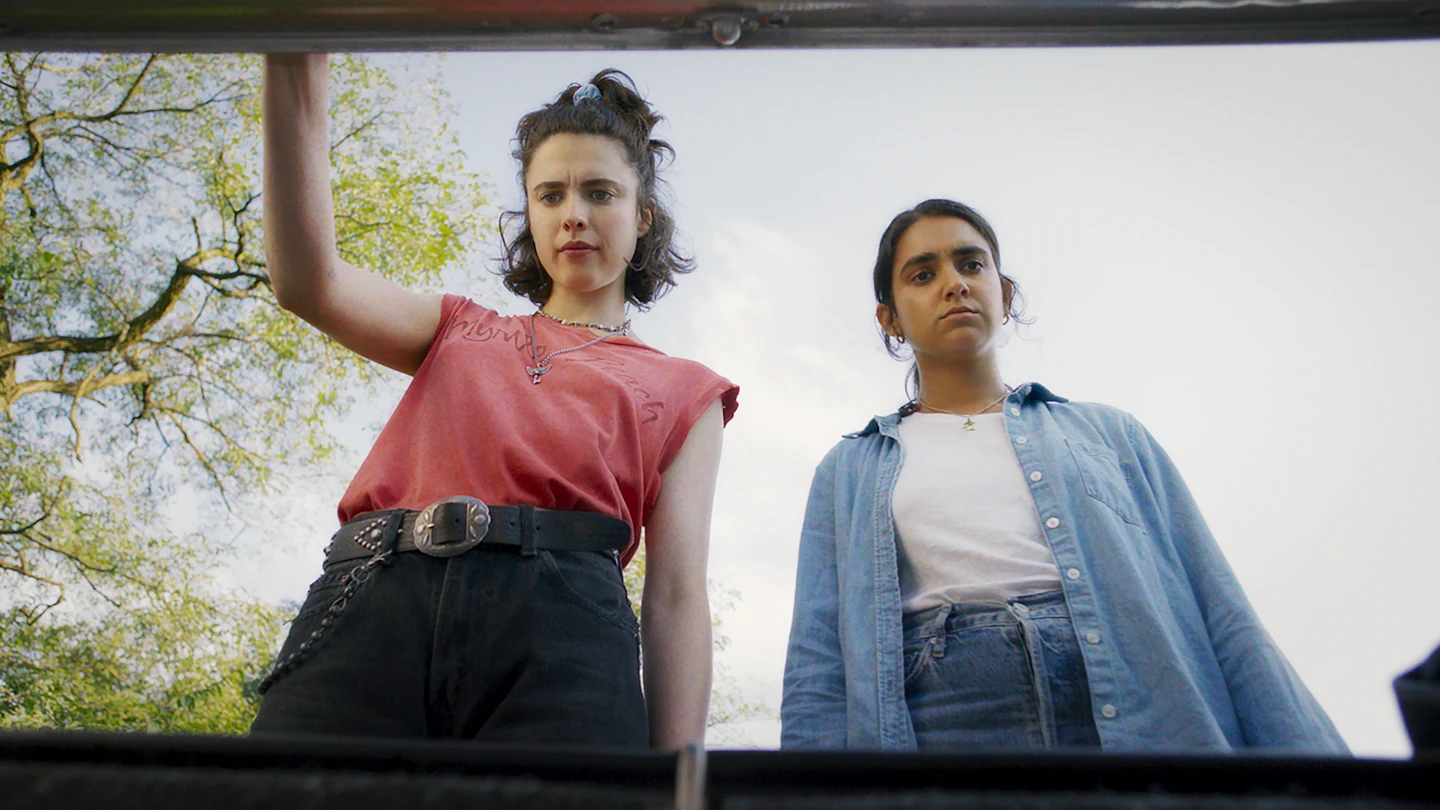Despite an initial wave of scepticism, fuelled by critiques lambasting Drive-Away Dolls (Ethan Coen, 2024) as a poorly executed foray into the risqué, my viewing experience unveiled a captivating cinematic journey, far removed from the anticipated vulgarity. This film, clocking in at under 90 minutes, promised a succinct adventure, minimising both temporal and financial investments (I took advantage of Cheap Monday at my local cinema). Contrary to the disparaging reviews, the film unfurled as an enthralling, psychedelic excursion, replete with unexpected delights.
A Psychedelic and Humorous Journey

At the heart of Drive-Away Dolls lies the journey of Jamie, portrayed by Margaret Qualley, and Marian, brought to life by Geraldine Viswanathan, as they navigate the complexities of youth, friendship, and discovery. Their venture, ostensibly a simple road trip to visit Marian’s Aunt Ellis in Tallahassee, as played by Connie Jackson, evolves into a kaleidoscope of encounters that challenge and redefine their understanding of the world and themselves.

Qualley’s Jamie, seeking solace from a recent breakup, steers their expedition through a series of eclectic locales, from dimly lit lesbian bars to the polished interiors of upscale hotels, each setting serving as a backdrop to the duo’s evolving narrative. Viswanathan’s Marian, meanwhile, embarks on a personal odyssey of self-discovery, her journey marked by moments of hilarity and introspection. The dynamic between Jamie and Marian, and their interactions with a cast of eccentric characters, underscores the film’s exploration of acceptance and the beauty of finding kinship in the most unexpected of places.
Inventive Visuals and Storytelling

Ethan Coen’s direction imbues Drive-Away Dolls with a distinct visual and narrative style, marrying the absurd with the profound. The film’s comedic elements shine brightest when disparate characters collide, their interactions a study in contrasts and the catalyst for much of the film’s humour. From Marian’s uninhibited conversations to the bickering between Chief, played by Colman Domingo, and Curlie, depicted by Bill Camp, these moments of clash and convergence form the core of the film’s message on acceptance.
Coen’s craftsmanship extends to the film’s aesthetic, where psychedelic visuals and inventive sound design create a viewing experience akin to a fever dream. The use of exaggerated transitions and sound effects not only amplifies the film’s comedic undertones but also serves as a testament to Coen’s creative vision, one that defies age and convention.
The plot, with its intricate web of conspiracies and comedic mishaps, thrives on its quirkiness, ensuring a pace that captivates without languishing. The introduction of characters such as Senator Channel, portrayed by Matt Damon, and his flashback-laden storyline, adds depth and intrigue, weaving a narrative that is as engaging as it is unconventional.
Casting Perfection and Unforgettable Characters

Drive-Away Dolls stands as a testament to the power of casting. Each actor, from the leads to the ensemble of minor characters, delivers performances that resonate with authenticity and charm. The film’s ability to balance a rich tapestry of characters, each contributing to the film’s thematic and comedic depth, is a hallmark of Coen’s directorial prowess.
In sum, Drive-Away Dolls emerges not just as a journey across the physical landscapes of America but as an exploration of the landscapes within. The film, through its blend of humour, heart, and a dash of the surreal, invites viewers to embrace the unexpected, finding joy and understanding in the most unlikely of encounters. It is a cinematic expedition that, while initially underestimated, proves to be a rewarding experience.

